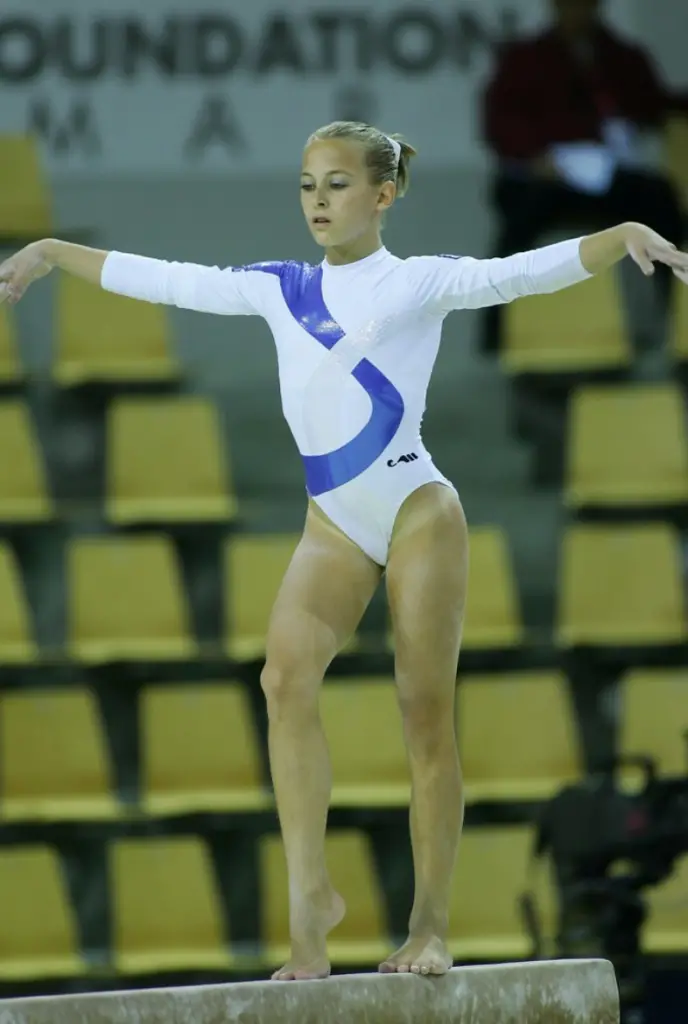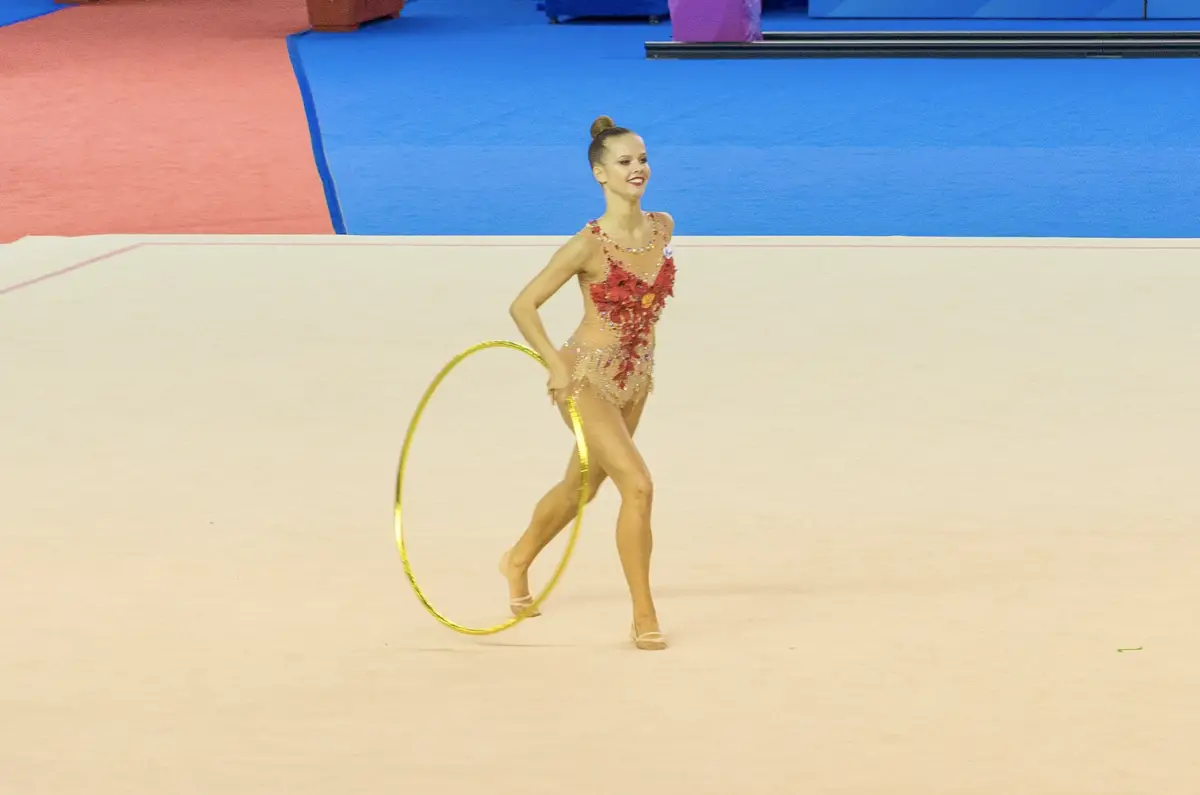Artistic gymnastics and rhythmic gymnastics might seem like they are very similar since they are after all both kinds of gymnastics, but there are actually a number of differences between these two branches of gymnastics. The most similar part of them is the floor routine that is done in the artistic gymnastics, but that is perhaps where the similarity between the two ends.
The main differences between artistic and rhythmic gymnastics are the completely different events and the fact that in artistic gymnastics that the boys have more events while rhythmic gymnastics is only for girls.
Artistic gymnastics is divided up into boys and girls divisions, each division having its own distinct events. The girls have four events which are the balance beam, uneven bars, vault, and the floor event which is done with music. The boys have six events which are the high bar, vault, and floor like the girls though without any music to the floor routine, in addition to the pommel horse, rings, and parallel bars.
Rhythmic gymnastics has all of its events on the floor and is in most places a branch of gymnastics that is solely for girls, though there are a few countries that are starting to allow men into this kind of gymnastics as well. The different events here are the clubs, ribbon, ball, hoop, rope, and freehand, all of which are always done to music of some kind. This form of gymnastics focuses on dance and flexibility, which is why any tumbling besides cartwheels, rolls, walkovers, and things like that is not allowed.
Artistic gymnastics, to the contrary, actually requires the gymnast to do tumbling in the floor routine. While there are still some dance moves that are required as well, as long as these are included somewhere in the routine the whole rest of the routine can be a series of tumbling maneuvers.
All of these different things mean that the muscles that you use more are also completely different when it comes to comparing artistic gymnastics to rhythmic gymnastics. This is because of the fact that artistic gymnastics focuses a lot more on strength.
This is particularly true and is easy to see just by looking at the other artistic gymnastics events besides the floor event. The uneven bars takes a lot of upper body strength in particular as the gymnast has to push and pull with various muscles in order to do all of those fantastic loops around the bar. The vault is also an event that requires a lot of strength in order to be able to vault yourself as high into the air as possible so that you can do the various twists and saltos before you hit the ground.

While there are some dance elements to artistic gymnastics, these are more to make sure you are flexible more than to make you look graceful or like you are dancing. Rhythmic gymnastics, on the other hand, is all about the dance and the gracefulness. While some strength is needed, it by far takes a second place to flexibility.
For this reason there is also a lot of cross training with ballet in order to learn the proper gracefulness and form for rhythmic gymnastics. This branch of gymnastics also requires better hand-eye coordination since you are often throwing things like the clubs up into the air and catching them somewhere else. The artistic gymnastics also requires some coordination to make sure that you are not placing a hand or a foot off the edge of the balance beam, but this is not quite the same as catching a moving object.
Another difference that you can see if you look at the events of these two different kinds of gymnastics is in the difference in the props that are used for each. In artistic gymnastics everything that is used, whether it is the balance beam, bars, or anything else, are all stationary items that do not move. In rhythmic gymnastics, however, all of the things that are used are all ones that are picked up and moved around somehow.
Another difference between artistic gymnastics and rhythmic gymnastics is that rhythmic gymnastics can be more team building. This is because this type of gymnastics allows pairs or even teams of gymnasts to compete and to be scored together as a group.
This is opposed to artistic gymnastics in which each gymnast must do their routine by themselves and be scored individually. This can often mean that in the end a gymnast may be trying to compete against the other members on their own team if it is not a team gymnastics meet.
During competitions there are other differences too. Artistic gymnastics has all of the routines except the vault last no more than 90 seconds, though they are allowed to be shorter. In rhythmic competitions, on the other hand, the gymnast has to have their routine between 75 and 90 seconds if doing an individual routine, or between 2 minutes 15 seconds and 2 minutes 30 seconds if it is a group that is doing a routine.
The way that these are scored is also different in a couple of ways. For both kinds of gymnastics there are two judging panels, one panel of judges who score the difficulty while the other panel focuses on the execution of each routine.
In artistic gymnastics the gymnasts are scored based on the difficulty of the maneuvers, their ability to combine these into combination moves, and how well they perform these maneuvers. This kind has 2 judges on the difficulty panel, which start with a score of 0, and add to it for each of the maneuvers that are done. There are 5 judges who look at the execution of the move, start with a score of 10, and deduct from the score for each error that they see.
At the end of the routine the final scores are looked at, both the highest and the lowest of the execution scores are dropped, then the remaining three execution scores are averaged out and this average is then added to the difficulty score.
Rhythmic gymnastics, on the other hand, is scored primarily on the gymnast’s use of the floor space, their body language, and how well their movements are synchronized with the music. There are 4 judges on the difficulty panel and 6 judges on panel that are watching the execution of the moves.
Out of the later panel, 2 of these are focusing solely on artistic faults – such as not being graceful enough or failing to transition smoothly – while the other four are focusing on the technical errors that the gymnasts makes.
The histories of both of these branches of gymnastics are also completely different. Rhythmic gymnastics was first started up in the Soviet Union in 1940, and it was not officially recognized as a gymnastics branch by FIG until 1961 with the first world championship being held for it two years later in 1963.
However, rhythmic gymnastics was not officially added into the Olympic Games until 1984. This was only for the individual competitions though, with group routines not being added in until the 1996 Olympic Games. All of this had a much later start than artistic gymnastics.
When the FIG was founded in 1881 it was with artistic gymnastics as the sole kind of gymnastics and with men being the sole competitors. This kind of gymnastics became part of the Olympics even before it had its own World Championships. Though 1896 was the first year that it was included in the Olympics, it was not until 1928 that there was a women’s division of artistic gymnastics in the Olympics.
Still, both of those years both them far ahead of the World Championships which did not include gymnastics as a sport until 1903 and did not include a women’s division until 1934, which was 6 years after women gymnasts were already competing in the Olympics. For either branch of gymnastics you have to be at least 16 years old in order to compete in the Olympics.

